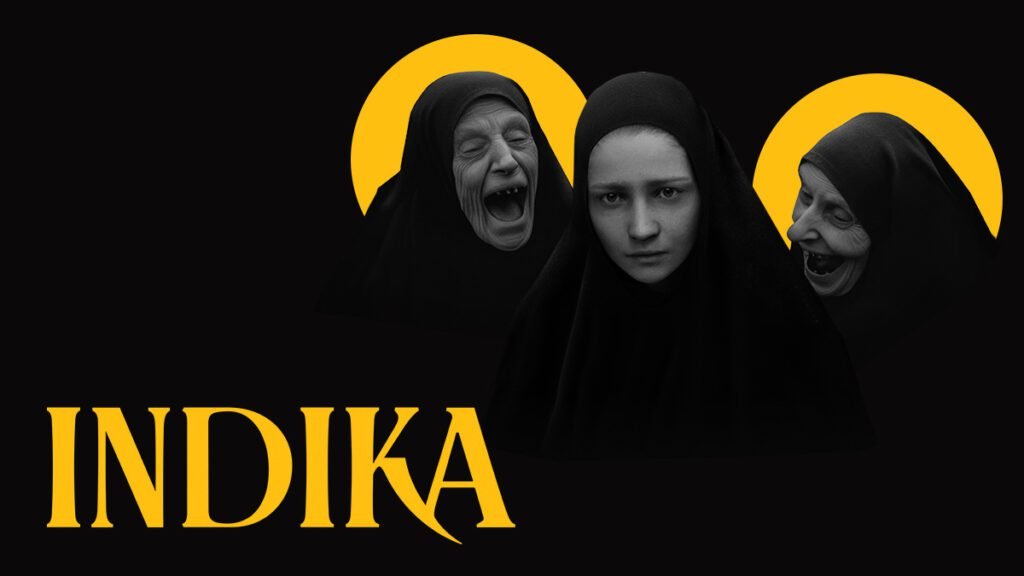I finished playing Indika a week ago, and I’m still thinking about it. I was first hooked on the philosophical discussions within this game. But that faded, and I could still hear the ‘Devil’s’ voice in my brain. More than Indika and Ilya, his words stuck with me. I realized that this game was so powerful primarily because of that voice in her head.
The role of the Devil, in his design, character, relationships, and, of course, the sharp, beautiful dialogues, brought Indika to life. It is worth studying Odd Meter’s approach for any designer or writer. Not just because he is a key character but because he mirrors Indika and us. And because he also impacts gameplay at key moments. (There will be spoilers for Indika going forward.)
Breaking Down The Devil
On The Surface
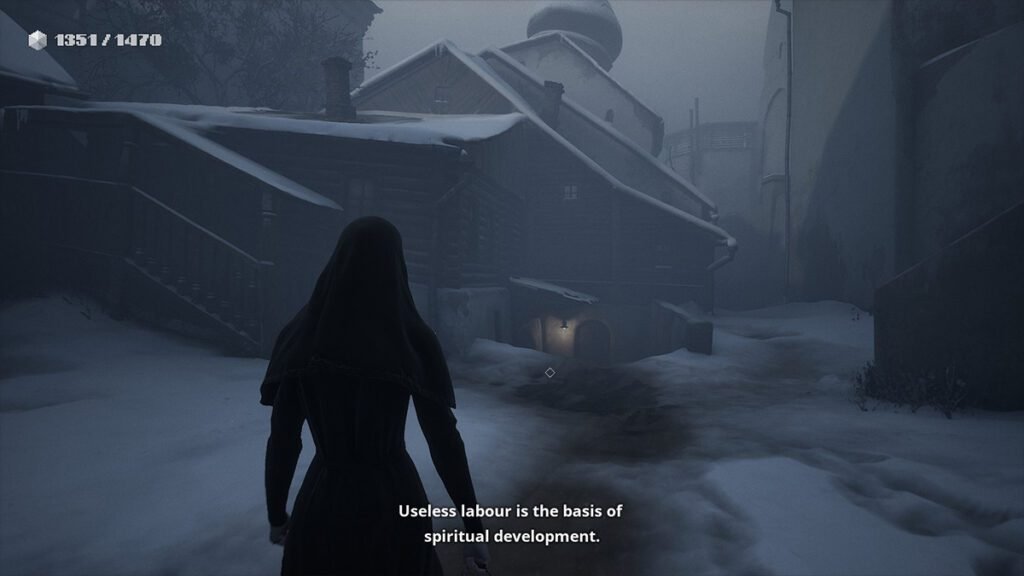
We meet Indika in a monastery, where she constantly apologizes for her existence. She is thrown out for disrupting prayers and sent to complete chores with nuns who barely want to look at her. She is defeated, hopeless, and just trying to push through the cold. We only get context for the world around her through the Devil’s wry, mildly mocking remarks. ‘What does it mean to be truly righteous? He asks to never succumb to temptation or take a vow of chastity despite constant temptation. Whether he is talking to her or us, it’s anyone’s guess.’ He mocks her, though, saying that ‘our heroine’ prefers not to dwell on this question.
As you stumble around the monastery, he narrates her life while taking jabs at her, her religion, and her sense of duty. Between his gleeful rolled ‘r’s and audible sneers he tells us and her that the nuns fail their religion, openly hating when they know that Christians are supposed to love and accept. He happily tells us that Indika has done nothing to merit the hatred but has a voice in her head, ‘nurturing thoughts, ’ which is unbecoming of a woman of virtue. He sets our expectations by giving us context to her starting mental state and his role as an inner saboteur, tempter, and shame. He gives us our unconscious goal by telling us, with mocking sympathy, that all Indika wants is to be free of that voice… his voice.
Narrator or Antagonist?
Then he lets us in on Indika’s inner thoughts about the life of rote obedience the nuns are forced to live and why she finds it tiresome even as she tries. The next thing we know, Indika is fighting off hallucinations, a visual manifestation of the voice. From then on out, the Devil’s voice taunts her while Indika valiantly tries to ignore him. When she does acknowledge him, the world literally splits apart. He questions her ideas of morality. For us, he gives us the needed subtext and history, laying Indika’s history and thoughts bare.
Through this, he makes her vulnerable, stripped naked so that nothing is hidden from us in the most humiliating way possible. Thus, he is immediately set up as an antagonist. The Devil is mean and aggressive but charming enough that you want to hear his next thought. All while, through her embarrassment, Indika becomes approachable. That leads us to care for this broken character seeking peace—Indika is kind through it all, you feel for her, and you understand her goal. Especially when she finds out that she has been tasked with delivering her own ruin. The Devil tempts her into opening the letter she is duty bound to deliver and laughs as she reads Mother Superior’s words, asking her to be defrocked. To others, this voice makes her feel less than human and less worthy of a home. The only way she can claw herself back to any sort of stability is by freeing herself from this voice.
The Second Layer
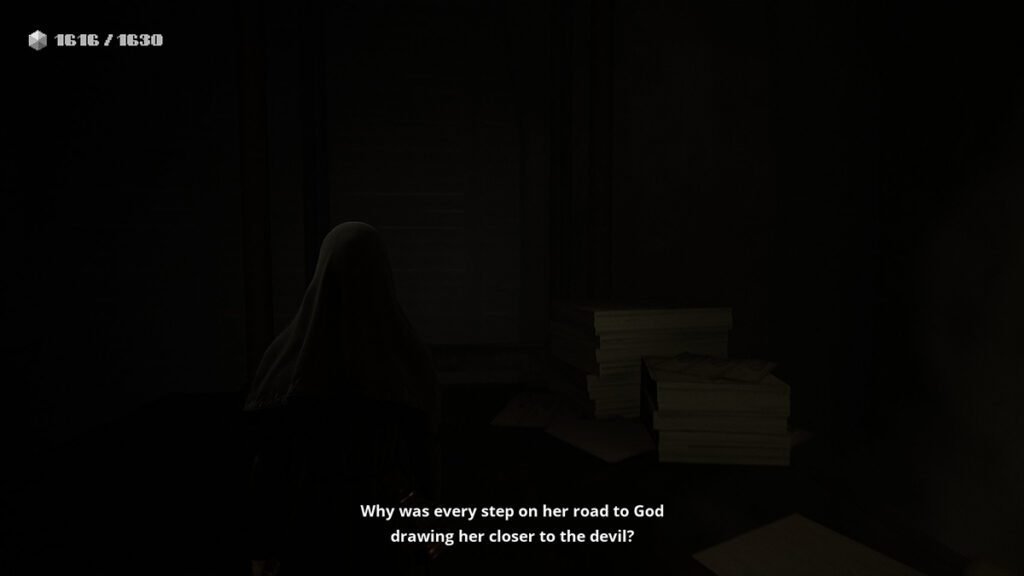
As the Devil realizes that he can anger her, you begin to see the depth of his design. On the surface, he has a very sharp wit, making cutting observations to get a rise out of Indika. He gleefully picks at Indika’s thoughts, revealing her desires. He tells us when she finds Ilya handsome, all while encouraging her to pay more attention. He tells on her, teases her, and scolds her for not being true to herself, even as he shames her for her feelings. As she faces difficulty on her journey, he argues over the semantics of the world, calling out the injustices she is facing at the hands of those who should protect her. You begin to see the layers of his personality, not just to call her out on her immediate actions but to get her to think about everything.
When she debates with Ilya about a rabid dog, the Devil pokes at her larger beliefs. Ilya calls the dog a sinner to be destroyed, but Indika disagrees. She tells Ilya that the dog is only reacting on feral instinct due to abandonment. Thus, it deserves their pity and tolerance, even when it endangers them. The Devil asks her why a dog deserves forgiveness, for isn’t man also reacting instinctually? It’s a wonderfully laid-out argument that spurs thought about the nature of sin and the soul. So, the Devil transcends the simple role of an antagonist to become a device for growth by challenging our beliefs.
Through the Devil’s jabs and taunts, we begin to see Indika’s grit and humor. We begin to see who she could be with peace and freedom outside of the habit. We begin to wonder what happened to drive this firecracker of a woman to a nunnery, a question that Ilya echoes.
The Third Layer
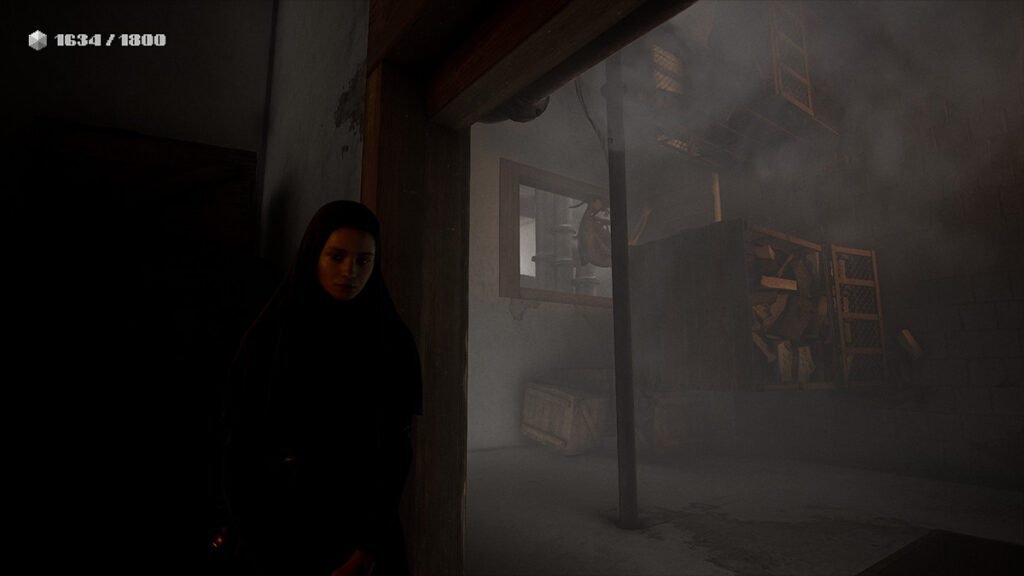
As we delve further into the story, though, we begin to see what the Devil truly is—A manifestation of Indika’s guilt about staying quiet and causing the death of someone important to her. A way for her to channel her trauma and fear. He is a way to lock all of her unchristian tendencies, her guile, wit, and rebelliousness behind a voice. After all, it is easier to blame the Devil, than take responsibility for your actions. This is never explicitly stated. It’s just my conclusion. In all the flashbacks, we never see her hit the mental break that creates this voice. But you can’t shake that feeling.
As Indika embraces her wit, joking with and pushing Ilya, the Devil steps back, questioning her over mocking her. As we understand Indika more, we see that what the Devil says are likely her own opinions that she doesn’t want to accept because they go against what a good nun should be. She tries so hard to fit into this life she ‘chose’. Through her arguments about free will with Ilya, you see the battle between her faith and her subversive thoughts.
The voice gets louder as Indika faces her temptations and growing attachment to Ilya. By extension, she gets more desperate to shut the Devil up, to spare herself from her inner conflict. And then she listens to the voice and almost loses Ilya. This is when she begins to manifest the Devil as a hallucination. Cleverly, Odd Meter didn’t create a stereotypical ‘Devil,’ but a monster that reflects Indika’s mind. A strange insectoid creature with a mocking face and many grabby hands. He looks like the voice in her head and mirrors her need to grab onto structure and acceptance.
Why He Works
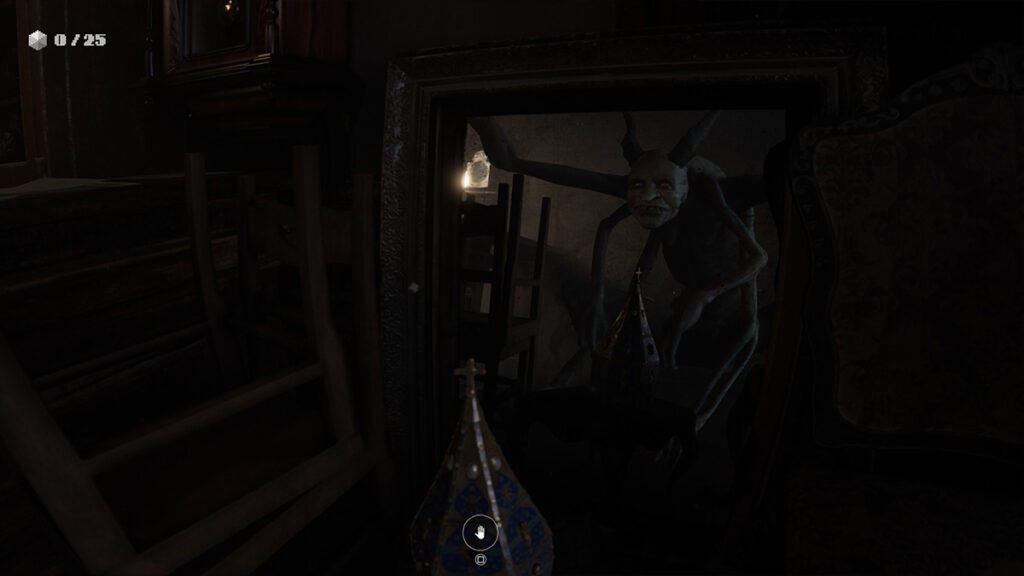
The easiest answer is the voice actor. His seductive voice creeps into your head, both in tone and writing. However, it is more than that. His tone, humor, and taunts keep us company through every challenge. He also influences traversal in the game. By breaking Indika’s perception, he shows her different routes, opening up new paths to get out of the areas she is trapped in. He is literally her way out from the life she is trapped in. This is further echoed when you realize that for all of his taunting, he is the one who protects her. His presence and distraction get us through some truly grim and horrific sequences.
By the end of the game, Indika tries to rid herself of the Devil because she must, but we have to acknowledge that this character is a friend. He may be a manifestation of her guilt and a cover for her rebellious nature, but he also represents what she could be.
Odd Meter created a character who is both antagonist and part of the hero. In that way, the Devil rounds out Indika into the character she is. The ability to craft a character like this is a true testament to the Narrative Design capabilities of Odd Meter. The Devil is the reason why Indika works even though we barely see him and never play as him.





